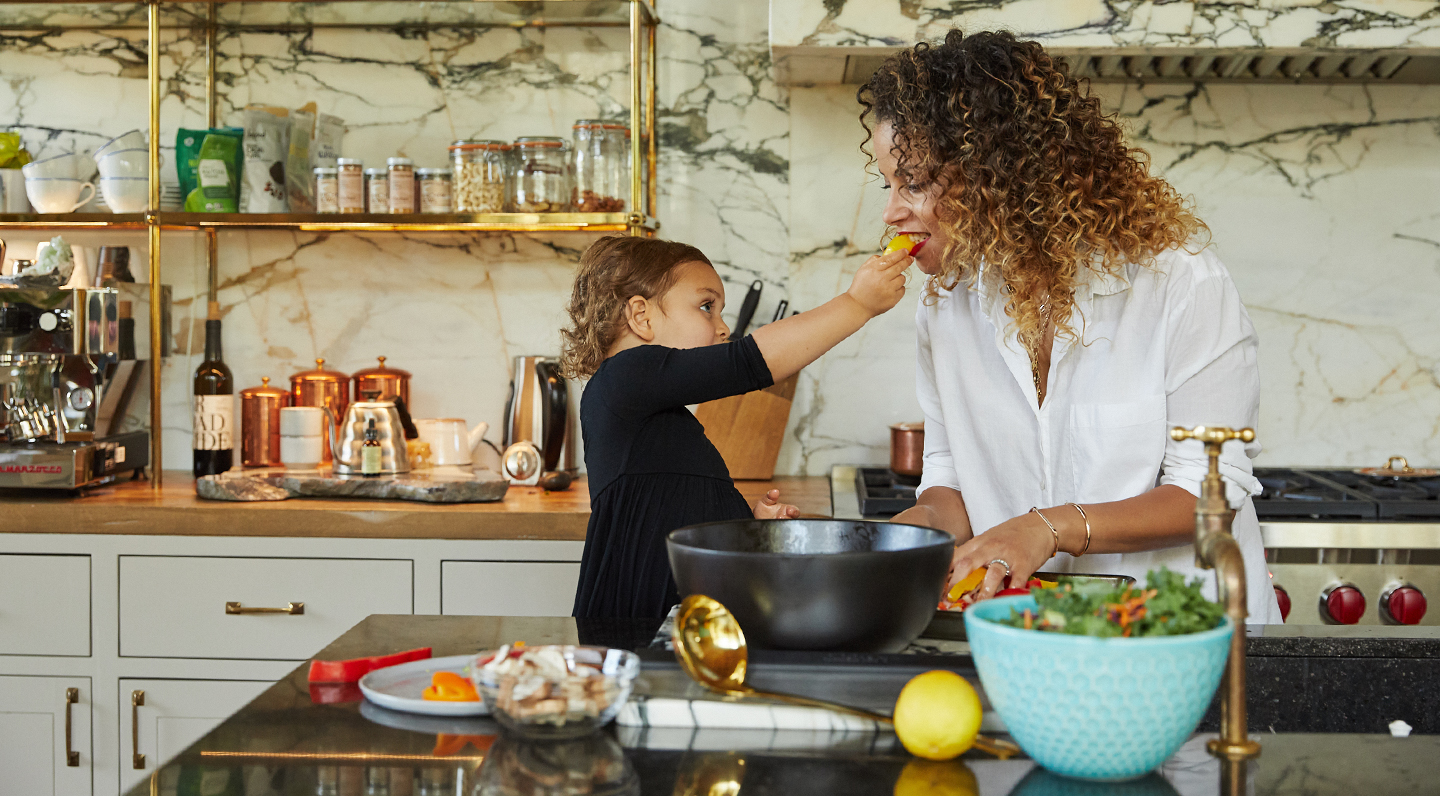10 Tips for Feeding a Picky Eater
Denise Vasi
Did you know that approximately 25–30% of young children do not ingest any vegetables on a given day? At some point or another, every child will go through a picky eating stage. One specific study found that as many as 50% of parents considered their children’s pickiest eating stage to occur during their children’s preschool years. So mamas, As many of you know, plant-based, and while the early exposure to tons of vegetables has conditioned her to be less picky when it comes to veggies or new foods, we still get some kick back every once in a while. Here are some tips I live by when my child is a picky eater.
Keep It Coming
If there’s a certain vegetable my daughter doesn’t like, I prepare it differently. I’ll wait a few days, and instead of roasting it I might saute it with a little olive oil and salt. If that doesn’t work, I might puree it and turn it into a soup or use it to top a homemade pizza. The point is rather than not serving it anymore I continuously present it to her in different ways. It’s been proven via extensive research that exposure and persistence is the most powerful way to get children to accept foods they once rejected. In fact, children may need to be exposed to food as many as 15 times before accepting it.
Small, Slow and Simple
Don’t overwhelm your child with large plates of food, if you have a picky eater, use a small sized dish to present a meal.
Don’t try to introduce too many new things at once. If your child has never had zucchini before and also has never had a baked casserole before then, it’s probably best not to sit a large slice of zucchini lasagna in front of them. It’s all too much at once.
Kids like simple things. If you have a picky eater too many flavor profiles at once can be intimidating.
One Before Done. Try Before You Say Bye.
These are the only eating rules in my home. My daughter knows that she must have at least one bite of something before she can reject it. Trying it once counts as exposure. One down, fourteen more times to go. More times than not she will try something and then shake her head “yes.” This only works, if you as a parent are willing to accept a “No.” If your child tastes something once and they still reject it, kindly remove it from their plate. Engage in some simple questions to find out more about why they didn’t like it and then move on. Use the intel to try presenting that item or meal differently in a few days. This exchange also builds trust. Your child will always go along with trying something once if they feel that you respect their final decision.

Be The Family That Eats Together
Sit down with your child for mealtime, whenever possible. Eating together is a comforting routine for children, especially if it’s dinner time. Not only does the consistency of eating together keep your child at ease, but it also creates an opportunity for you to model good eating habits. When your child sees you enjoying brussels sprouts, they may also feel inspired to enjoy brussels sprouts. Additionally, mealtime together gives you a chance to catch up and talk about your day as well as discuss what your child might not like about their meal. AKA it’s a great time to get intel.
Eat The Same Meal
After about two years old, the chances of you getting to devour a plate of pasta while your child eats their entire plate of greens is over. Don’t waste your time cooking separate meals and don’t try to fool them. Model good eating habits by enjoying the same nutrient dense meal you prepare for your child.
Say “No” To Distractions During Meal Time
This goes both ways. Say no to anything that might take your focus away from your child and say no to anything that might take their focus away from their food. Turning the T.V. off or putting the phones away will also keep you calm when talking to your child about their lack of interest in their meal. Rather than shouting over your phone, “Eat your veggies!” Calmly ask your child detailed questions and try to pinpoint what it is they don’t like about their food. You might find out that your child thinks something is too salty and then you’ll know for the next time you prepare that dish. Putting away toys and not allowing screen time during meals enables your child to focus on eating solely.

Keep Things Light
You want to avoid creating any negative association regarding food for your child. Too much pressure, demanding, or punishing can backfire in ways that last far longer than you think. We now know that that old school mentality of “not getting up from the table till you finish your meal” does more harm than good. Don’t force feed your child. It can keep her/him from learning how to listen to their own hunger cues which could later result in an adult who unhealthy overeats.
Look Out For Food Sensitivities
Not all food allergies present themselves with a visibly nasty red body rash. For as long as I can remember whenever I ate a banana, all the taste bumps on my tongue would puff up, and my tongue would feel oddly different for an hour or two. It wasn’t till my 20’s did I discover that that was a way my body was communicating with me. It turns out I have a food sensitivity to bananas. Sometimes your child might be rejecting food because they feel some internal reaction to it. That’s why asking questions and talking about what exactly your child dislikes is so important.
Go Shopping Together
Heading out to the market together allows you and your child to meal plan together. Allowing them to choose what you being home will help a picky eater because children love when they feel that they’ve had a choice.
Cook Together
This is my favorite tip of all. You ever cook something for yourself, and even though it’s not that great, you eat it and enjoy it because you made it. That feeling of accomplishment inspires children in the same way. Get in the kitchen with your toddler and cook together. There is actual research that proves children who help prep their own meals are more inclined to eat them.





